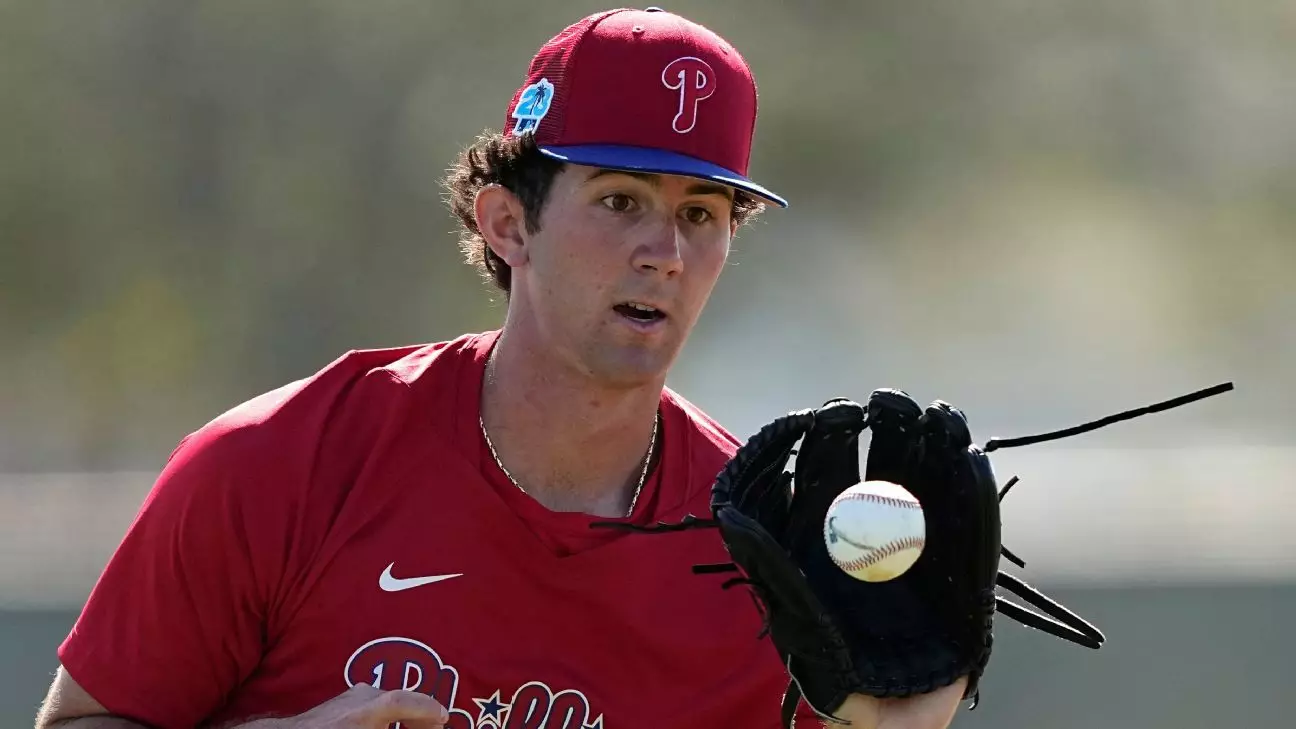The story of Andrew Painter, the Philadelphia Phillies’ top pitching prospect, vividly illustrates the tension between player potential and the medical realities of sports injuries. Despite being named to the prestigious All-Star Futures Game—a showcase for baseball’s most promising young talent—Painter will not participate due to ongoing recovery from Tommy John surgery. This decision underscores a critical philosophy in player development often overlooked amid fans’ eagerness: health and gradual progression must trump rushed debuts.
Painter’s impressive 2022 stats, highlighted by a stunning 1.48 ERA and solid strikeout totals, propelled his status as a highly prized draft pick. His fast ascent through the minor leagues generated sizeable excitement around the Phillies’ organization and fans alike, with expectations mounting for a major league arrival soon after his surgery. Nevertheless, the Phillies’ management remains pragmatic. As manager Rob Thomson pointed out, there is no guarantee Painter will break into the majors immediately post-All-Star break. The priority remains his health and effectiveness on the mound.
Injury Risks and Organizational Prudence
Tommy John surgery, while often considered routine for pitchers, requires a lengthy and carefully monitored rehabilitation to restore full arm strength and mechanics. The decision to withhold Painter from the Futures Game, despite his elite status, reflects a commendable restraint. Rushing a player back, especially one so young and coming off a significant surgical procedure, risks long-term setbacks that can derail promising careers. The Phillies’ methodical approach exemplifies the best practices of sports medicine and talent nurturing—place the player’s long-term well-being above short-term exposure.
Painter’s ongoing starts for Triple-A Lehigh Valley will serve as invaluable benchmarks to gauge his readiness. His ability to maintain performance levels without discomfort or regression will ultimately dictate the timetable of his major league debut. This strategy communicates an essential message to both fans and players: patience is vital, and recovery cannot be accelerated by impatience.
Analyzing the Future Impact
Drawing from the history of past Futures Game participants, Painter’s inclusion on the roster remains a positive indicator of his potential trajectory. Statistically, a significant majority eventually reach the majors, with roughly a fifth achieving All-Star status at the big league level—highlighting the caliber of talent showcased. However, these numbers also reveal that potential is no guarantee. Many prospects falter due to injuries or developmental issues.
For Painter, the narrative is still being written. His skill is undeniable, but the reality of professional sports demands a balance between ambition and prudence. The Phillies’ cautious but optimistic stance affirms a commitment to nurturing not just talent, but durable, long-lasting careers. Those who appreciate the intricacies of player development will recognize the wisdom in this approach, understanding that true greatness isn’t just about speed to debut, but resilience and growth over time.

